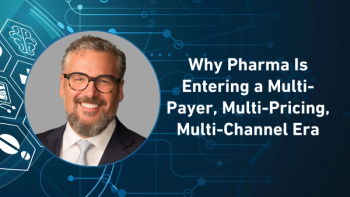
- Pharmaceutical Commerce - January/February 2016
Vaccines manufacturers wrestle with public health policy
Good growth is occurring in the vaccine business, despite the hurdles of public perceptions and public-health funding shortfalls
John Doyle
Quintiles
Ryan Million
Trinity
There is a perception that national vaccination programs, or even just individual vaccinations for, say, travelers going abroad, has been motoring along for decades, due to the near-universal acclaim that vaccination has had over the past century in eliminating human scourges like polio and measles. But along the way, it should be noted, a tiny but significant occurrence of adverse reactions had been taking place, leading to the establishment of the National Vaccine Injury Compensation Court (VICP) in 1988 (which has adjudicated a couple thousand claims out of the more than two billion vaccine treatments administered since then; compensation is funded by a surtax on vaccine sales).
Then came the now-thoroughly discredited study claiming a connection between childhood vaccines and autism, and things haven’t been quite the same since. While that study, originating in the UK in 1998, was partially and then fully retracted, and despite dozens of resulting studies that found no such connection, it led to the growth of an “anti-vaxx” community (
Meanwhile, there continues to be a hurry-up-and-wait, start-and-stop process for eradicating infectious diseases throughout the developing world. Endemic diseases such as onchocerciasis (river blindness), preventable by Ivermectin, a drug donated by Merck, are now disappearing in parts of the world. World Health Organization efforts for other diseases continue, aided by private foundations like the Bill and Melinda Gates Foundation and GAVI, the Vaccine Alliance. Nevertheless, the field remains underfunded and underutilized. A recent issue of Science magazine [1] publishing the results of a committee of infectious disease experts, notes that there are at least ten “feasible” diseases that are addressable by current vaccine science, yet remain undeveloped. The most notable of these is Ebola, which caused thousands of deaths in Africa in 2014 and led to a panic reaction in the developed world out of fear of the infection spreading.
Pharma manufacturers, buffeted by these societal and technical hurdles, had been retreating from the vaccine field in the early years of this century, but lately have been returning as new science leads to promising outcomes. FDA approved Novartis’ Bexsero, a vaccine for a type of meningitis, last year, and Fluad, a seasonal influenza vaccine, also from Novartis.
Currently, the global market for vaccines is around $33 billion, projected to rise at an 11.8% annual rate to $58 billion in 2019, according to a 2015 report by MarketsandMarkets, a market research firm.
Moving forward
Sanofi Pasteur MSD sponsored a recent supplement to the J. of Market Access and Health Policy [2] to showcase the overall dynamics of public health and vaccination programs (primarily in Europe), the substantial life-saving benefits, and the economic returns on funding of these programs (downloadable at http://www.jmahp.net/index.php/jmahp). The supplement’s editors, in an article titled “The Economic Value of Vaccination: Why Prevention is Wealth,” recommend three broad-based needs to advance the field:
- Shift in mind and in budget: Given the undeniable importance of vaccination for public health, there is a need to secure an appropriate level of budget to guarantee populations’ access to vaccination;
- Shift in communication: There is a need to communicate clearer and more compelling messages about the value of vaccination to governments and policymakers, as well as healthcare professionals and the lay public;
- Shift in vaccines evaluation: There is a need to consider the global economic benefits from vaccination. Economic evaluations should move beyond assessing only the effect of vaccination on health and medical costs at the individual level, and address the broader economic value to society.
Despite their record of success, “vaccines are often undervalued and/or underused, though for different reasons: Undervalued, paradoxically, in some parts of the world where increased vaccination coverage could provide significant benefit; underused, in other parts of the world where the high standards of health and healthcare seem to be have led to the achieved vaccine-borne benefits being taken for granted, in these societies at risk of complacency,” says Vanessa Rémy, PharmD., MSc., of Sanofi Pasteur MSD (Lyon, France), in the J. of Market Access and Health Policy.
“We are seeing a generational gap, where people literally just don’t know how catastrophic it can be,” adds Ryan Million, partner at Trinity Partners (Cambridge, MA). “They do not fear diseases they do not know, or appreciate the utility of mass vaccination programs because they have never lived through or witnessed the types of devastation that our recent ancestors have experienced, in terms of regular measles, polio and other outbreaks—but ironically that’s because these are the very diseases that have been prevented or eradicated by proper vaccination.”
And while much of the debate, such as it is, occurs between the anti-vaxx crowd and public health policymakers, the physician and pediatrician communities could play a stronger role, according to a study on HPV vaccine uptake. A study of 776 US pediatricians and family practitioners, published in October 2015, shows that many are neither communicating about, nor advocating for, the HPV vaccination strongly enough [3]. According to the study authors: “…Recommending HPV vaccine inconsistently, behind schedule, or without urgency...likely contribute to under-immunization among adolescents, and may convey ambivalence to parents.” Because a strong recommendation from physicians is perhaps the greatest factor in parents deciding whether or not to vaccinate their children, doctors who fail to make it a priority are influencing outcomes. The study concludes that “improving the quality of physicians’ recommendations for human papillomavirus (HPV) vaccination is critical to addressing low coverage.”
To combat these barriers, strong, consistent counseling for parents and students should stress HPV’s direct link to cancer—and put less emphasis on HPV’s sexual-transmission pathway. “I’m not a big fan of the moral part of the argument being overlain on any healthcare improvement that has been scientifically and clinically established,” says Million of Trinity Partners. “HPV causes cervical cancer and if you can prevent that, that’s just a good thing and that’s all there is to it. The best outcome would be to get it automatically, both genders, at a certain age, and take the distracting debate off the table altogether.”
Despite being a leading consumer of HPV vaccines, the vaccination rate against HPV in the US remains far below recommended levels. For instance, the CDC notes that in the US in 2014, four out of ten adolescent (age 13—17) girls, and six out of ten adolescent boys, had not started the three-dose HPV vaccination series (these rates vary by state).
Fig. 2. West’s intradermal adapter enables more consistent vaccine administration. Credit: West
Other adult vaccines
Just as HPV vaccines are proven to prevent the incidence of certain types of cancers, vaccines against hepatitis-B infection and hepatitis-C (which have been available for several decades) also reduce chronic liver disease and liver cancer. Today more than 90% of countries include hepatitis-B vaccination in their childhood immunization program and have shown dramatic reductions in liver cancer [4].
Shingles is a painful and debilitating disease caused by the varicella-zoster virus (which causes chickenpox); when patients have had chickenpox as a child, the virus remains dormant in the body and can reappear as shingles, as the immune system weakens with age. The blistering rash and post-herpetic neuralgia associated with shingles can lasts for weeks or months, and are often so severe that they require prescription antidepressants, opioids, various analgesics and antiepileptic medicines. In the US alone, more than a million cases of shingle occurs each year, according to FDA.
The Zostavax vaccine from Merck is currently the only licensed shingles vaccine. It reduces the incidence of shingles by 50—70%, depending on the age of the patient, according to the company. GlaxoSmithKline has developed a newer shingles vaccine, called Shingrix, which was shown to provide 97% protection against shingles in certain patients aged 50 years and older during Phase III trials. GSK intends to submit a regulatory approval for Shingrix in North America, Japan and the EU during the second half of 2016.
Prevnar 13 from Pfizer is a pneumococcal conjugate vaccine that prevents pneumococcal pneumonia and related meningitis in both children and adults. Pneumococcal meningitis can cause deafness and brain damage, and kills one child in ten who get it, according to the CDC, which notes that since the introduction of the vaccine, severe pneumococcal disease in children has fallen by 88%.
An estimated 300,000 adults 50 years and older are hospitalized each year from pneumococcal pneumonia, according to FDA, and roughly 18,000 older adults die from pneumococcal disease each year in the US, according to the CDC. Treatment of such infections has become less effective in recent years because some strains of the disease have become resistant to the prevailing antibiotics. This makes prevention through vaccination even more important, says the CDC.
And promising early work suggests it’s only a matter of time before vaccines are approved to target other forms of cancer, AIDS and more.
In terms of nosocomial (hospital-acquired) infections, Pfizer, Sanofi and Valneva are all developing vaccines aimed at preventing the spread of the bacterial pathogen Clostridium difficile (C. diff.), which causes an insidious, antibiotic-resistant gut infection that is a major scourge in hospitals and longterm-care facilities, and causes an estimated 14,000 deaths per year in the US. Based on current incidence rates, the annual cost imposed by C. diff. infections is about $800 million in the US and 300 million in Europe [5].
Making the economic case
“Years ago, manufacturers launching a new vaccine would simply get on the immunization schedule on the national level,” says John Doyle, DrPH, MPH and SVP, Advisory Services, for Quintiles, who is also an adjunct professor in epidemiology and public health at the Mailman School of Public Health at Columbia University. “Today, they must demonstrate the value and return-on-investment of the vaccine—not just for the individual patient, but for entire realm of public health, in terms of the additional complications that can be avoided with vaccines.”
For instance, a growing body of evidence suggests that the use of the influenza vaccination helps to reduce the risk of myocardial infarction and stroke risk in older patients [6, 7]. Similarly, it has been reported that people who develop shingles have a 30% higher risk of having a stroke. And a large, hospital-based study suggests that pneumococcal vaccination was associated with a 50% lower risk of myocardial infarction two years after vaccination [8]. These are the types of subsidiary health benefits that should be included in the valuation of costly vaccines.
“The seasonal flu vaccine used to be recommended for just a small slice of population (and generally not healthy adults), but the guidelines now pretty much recommend it to everybody to fully exploit herd immunity, and thus avoid associated healthcare costs in the long run,” says Million of Trinity Partners. “Cynics will claim it’s about pharma trying to drive sales, but it’s really about avoiding predictable, costly situations that can be prevented with proper vaccination.”
According to Doyle of Quintiles, three separate dimensions must be considered when demonstrating the value of a vaccine—clinical, economic and humanistic. Pure clinical value (in terms of safety and efficacy of the product) is demonstrated by large clinical trial data sets, and today, safety and efficacy must be judged against the standard of care to ensure that any new vaccine provides a net health benefit. To move the needle in a significant way can be difficult, he says.
The economic valuation of a new vaccine is harder to come by. “How do you monetize the opportunity to avoid future infectious episodes and downstream health-economic events?” says Doyle. “It’s no longer enough to say ‘Well of course we want to avoid this health episode.’ Today, you need to put a dollar value on the avoidance of shingles or pneumococcal pneumonia, for instance, in terms of disability-adjusted life years.”
Since vaccine manufacturers don’t always have sufficient real-world data at their fingertips when a new vaccine is launched, “we are seeing a lot of probabilistic simulation models being developed and used today, using clinical trial data on safety and efficacy to simulate the risk-benefit profile for an entire population,” says Doyle. “And many payers are becoming very sophisticated in the vaccine space, in terms of both understanding and embracing this modeling approach.”
“The ability to reach that tipping point on herd immunity is important, because maybe you don’t need to vaccinate the entire population to achieve the desired benefit,” Doyle adds. “Advanced mathematical modeling is being used to study these questions, as they have huge budget implications for all stakeholders implementing comprehensive vaccine programs.”
Other obstacles in the field
In addition to cold chain challenges hindering successful vaccine distribution and uptake, proper administration of some types of vaccines can be a challenge, particularly in underdeveloped areas that have a shortage of advanced healthcare facilities and trained personnel. Over the past few years, there has been a growing awareness of the unique benefits of delivering vaccines intradermally for hard-to-vaccinate populations, such as the elderly. “Intradermal vaccine administration offers numerous potential benefits for patients, including improved vaccine safety, increased vaccine effectiveness and enhanced immunogenicity,” explains Zach Marks, MS, RPh, director of strategic marketing, West Pharmaceutical Services (Exton, PA), particularly for patients who are typically non-responders to traditional subcutaneous and intramuscular vaccines.
However, the traditional Mantoux method of intradermal injection requires significant training and experience to ensure correct, consistent dosing, even among experienced clinicians. To rectify this issue, West Pharmaceutical Services has developed an intradermal adapter that sits on a standard syringe (see photo) and makes intradermal injection easier and more consistent by guiding the angle and limiting the depth of needle insertion. “Utilization of an intradermal adapter requires less end-user training, helps to increase the success rate of intradermal injections, avoids wasted doses, and reduces time and cost for reformulation of the vaccine,” says Marks.
The challenge in developing nations
Deploying mass vaccination campaigns in developing nations is always a challenge, due to a variety of structural issues, ranging from inconsistent supply chain infrastructure, cold-chain transportation and storage issues, difficulties related to stockpiling supplies due to short expiry dates, and more.
“While enormous investments have been made to ensure that low- and middle-income countries have access to safe and effective vaccines, these challenges can delay new vaccine introductions, jeopardize product effectiveness, and reduce the availability of vaccines at the point of immunization in many developing nations,” says Debra Kristensen, director of vaccine and pharmaceutical technologies at the PATH (Seattle, WA), an international nonprofit. WHO estimates that immunization programs will, by 2020, require twice the storage and transport capacity to manage four times the vaccine volume per fully immunized person. According to WHO, health workers—already in short supply—will need to administer six times as many doses per person and in more places, including schools, pharmacies and even homes [9].
“To address the underlying structural problems, new approaches must reconsider the complete supply system, from distribution and inventory policies to the evolving roles of information systems and supply chain managers,” says Kristensen. PATH’s approach is to deploy cross-functional teams to:
- Develop and deploy information and communication technology solutions that make it easier to assess and use data in decisionmaking.
- Provide technical assistance to help ministries of health identify and test appropriate solutions, set policies, and participate in global health discussions.
- Advance novel cold chain equipment to more safely and cost-effectively store and transport temperature-sensitive products—even in remote areas lacking consistent access to electricity.
- Work with developers and manufacturers, alongside other technical partners, to improve product presentations and packaging to decrease volumes for transport and disposal, bundle essential product components, and reduce product loss.
Similarly, Kristensen notes that because the safe management and disposal of “infectious sharps” waste remains a challenge for many health systems in low-resource settings, PATH is supporting development of safe-injection technologies, and promising, needle-free vaccine-delivery alternatives, such as thermostable, fast-dissolving tablets or dissolvable microarray patches, among others.
References
- Science, 1 Jan 2016 [351:6268, 16—19], p. 16
- Journal of Market Access & Health Policy 2015, 3: 29204; http://dx.doi.org/10.3402/jmahp.v3.29204)
- Cancer Epidemiol Biomarkers Prev; 24 (11); 1—7; http://cebp.aacrjournals.org/content/early/2015/10/13/1055-9965.EPI-15-0326.abstract]
- Kane MA. Preventing cancer with vaccines: Progress in the global control of cancer. Cancer Prev Res (Phila) 2012; 5(1): 24—9).
- Bouza E. Consequences of Clostridium difficile infection: Understanding the healthcare burden. Clin Microbiol Infect 2012; 18 (Suppl 6): 5—12.
- Nature Reviews Drug Discovery 14, 373 (2015); doi:10.1038/nrd4660
- Bouza E. op. cit.
- Consequences of Clostridium difficile infection: Understanding the healthcare burden. Clin Microbiol Infect 2012; 18 (Suppl 6): 5—12.
- World Health Organization (WHO). Immunization Supply Chain and Logistics: A Neglected but Essential System for National Immunization Programmes. Call to Action. WHO/IVB/14.05. Geneva: WHO; 2014.
- http://www.cdc.gov/vaccinesafety/research/publications/index.html
- http://www.health.ny.gov/prevention/immunization/vaccine_safety/misperceptions.htm
- JAMA, 2015; 313(15):1534—1540; doi:10.1001/jama.2015.3077]
Articles in this issue
almost 10 years ago
Managing logistics partnerships in uncertain timesalmost 10 years ago
The impact of the anti-vaccination lobbyalmost 10 years ago
Logistics providers confront a complex, global healthcare marketalmost 10 years ago
Digitized stress analysis improves blister performancealmost 10 years ago
Enterprise solutions for cold chain managementalmost 10 years ago
Pharma logistics--so what?almost 10 years ago
Industry hit a record low number of FDA OPDP actions in 2015almost 10 years ago
Collaboration key to a healthy supply chain in 2016Newsletter
Stay ahead in the life sciences industry with Pharmaceutical Commerce, the latest news, trends, and strategies in drug distribution, commercialization, and market access.




